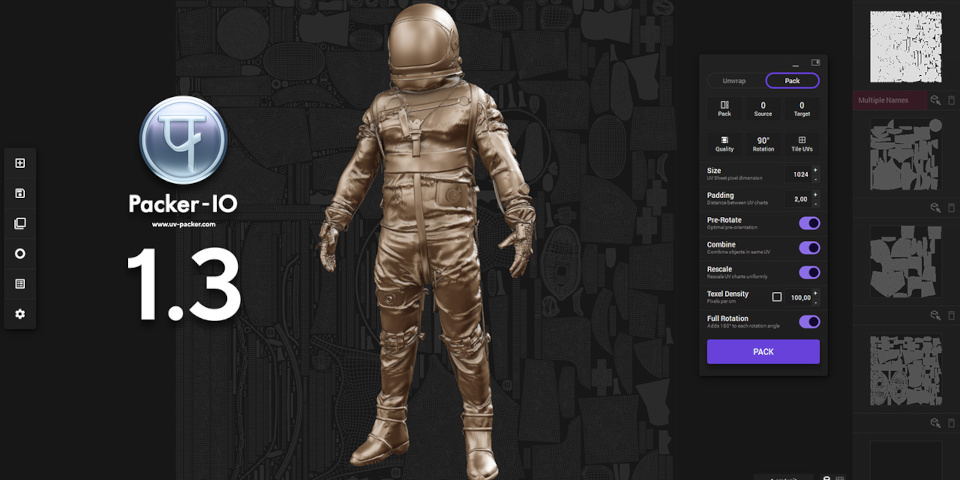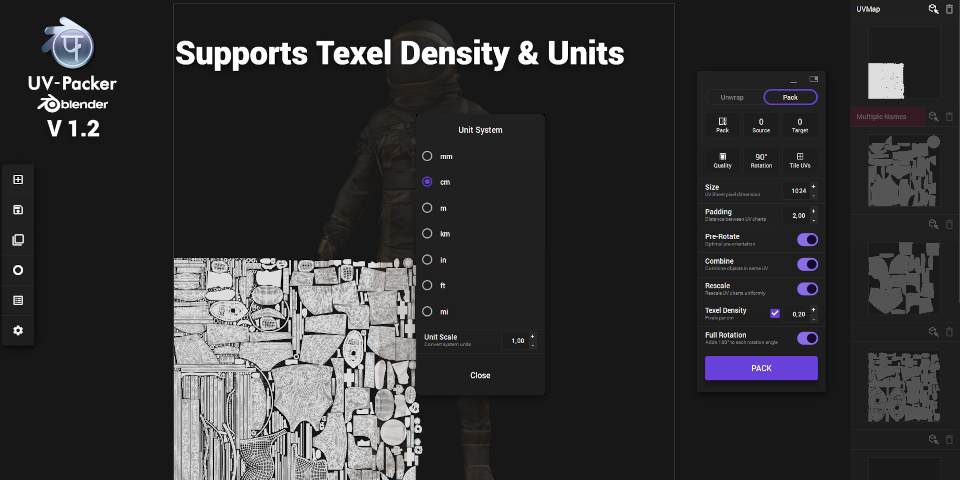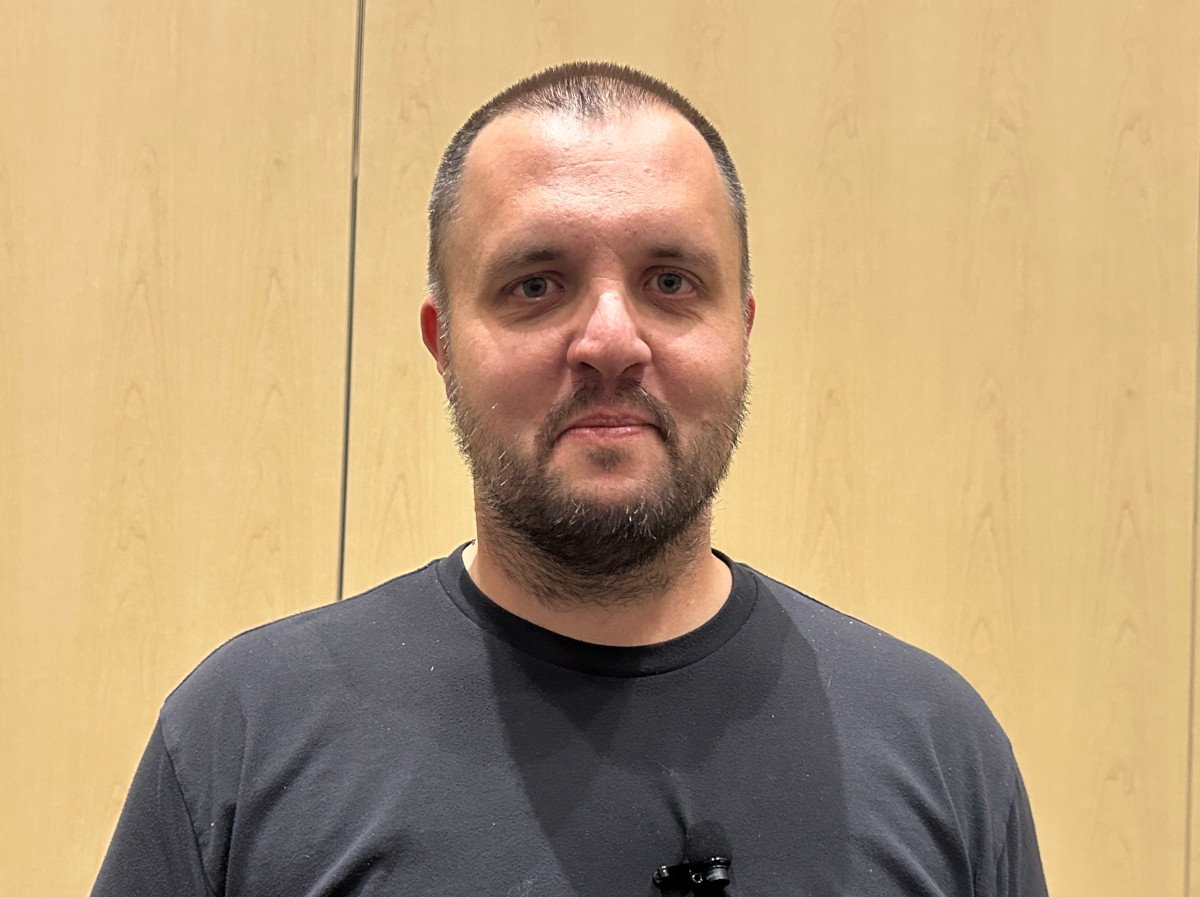- Bulls in Charge at PSX as KSE-100 Index Surges 6% This Week ProPakistani
- PSX nears 132,000 as bulls charge on The Express Tribune
- PSX extends record rally on robust buying Dawn
- PSX soars: KSE-100 gains 7,570 points in first week of fiscal year Daily Times
- A bull market is a good time Business Recorder
Author: admin
-
Bulls in Charge at PSX as KSE-100 Index Surges 6% This Week – ProPakistani
-
Major study finds hearing devices dramatically improve social engagement – McKnight's Long-Term Care News
- Major study finds hearing devices dramatically improve social engagement McKnight’s Long-Term Care News
- Hearing Loss and Loneliness People’s Defender
- Hearing Aids Are a Boon To Social Life, Study Finds U.S. News & World Report
- Hearing aids associated with improved mental well-being and social connection Daily Jang
- Hearing devices significantly improve social lives of those with hearing loss EurekAlert!
Continue Reading
-

Oasis reunion tour: Fans ‘absolutely buzzing’ as Cardiff gears up for first show of comeback tour – live updates
‘Adam’s last words were ‘I’ll be there with you’’published at 14:43 British Summer Time
Kris Bramwell
BBC News Image source, Sam Randall
Image source, Sam RandallImage caption, Sam Randall (right) will be remembering his Oasis-loving friend Adam, who died earlier this year
Sam Randall, 41, in Maidenhead, Berkshire, is going to the gig tonight with his old school friends Rollo and Pete. They went to secondary school together and “collectively all got into Oasis around the same time in 1995”.
However, there is one person missing from the group – Adam Conrad Pratt.
“In 1997, after plenty of pleading with our mums (we were barely aged 14 or 15), we managed to get tickets to see Oasis on their Be Here Now tour at Earls Court. Later that year, Adam and I saw them again at Wembley Arena. Oasis became our band! The soundtrack to our youth.
“In 2020, Adam was diagnosed with colon cancer. He faced it with courage and determination, undergoing multiple surgeries and treatments.”
So when the reunion tour was announced, the friends were “beyond excited”. Then Adam’s cancer returned aggressively around Christmas 2024.
“After a brave fight, Adam passed away at home in California in February surrounded by his family.
“I was lucky enough to have one final call with him just days before. Though weak, he still managed to joke and laugh. I’ll never forget him saying, ‘I’ll be there down the front with you boys at the gig’.
“In honour of Adam, we’ll be wearing custom t-shirts I designed for the concert. He may not be there in person, but he’ll be with us in every word we sing!”

Continue Reading
-
Scientists Create “Living Bricks” To Build Homes on Mars – SciTechDaily
- Scientists Create “Living Bricks” To Build Homes on Mars SciTechDaily
- Bioplastic habitats on Mars could be built from algae New Scientist
- How synthetic lichens can launch Martian construction Construction Dive
- A 3-D printed, plastic beaker could help algae grow on Mars Science News
- Bioplastic shelters support algae growth in Mars-like conditions for space habitats Phys.org
Continue Reading
-

The ITA notifies wrestler Tsogbadrakh Tseveensuren of an apparent anti-doping rule violation
The ITA reports that a sample collected from Tsogbadrakh Tseveensuren, a wrestler from Mongolia, during an in-competition testing mission at the Senior Asian Championships on 29 March 2025 has returned an AAF¹ for exogenous testosterone.
Exogenous testosterone is prohibited under the WADA Prohibited List as S1.1 Anabolic Androgenic Steroids. Exogenous testosterone is prohibited at all times (in- and out-of-competition) and is a non-specified substance. Testosterone is the principal androgenic steroid and is associated with the promotion of muscle growth and increased strength, power and speed.
The athlete has been informed of the case and has the right to request the analysis of the B-sample.
If the B-sample analysis is requested and confirms the result of the A-sample, the case will be considered as a confirmed anti-doping rule violation. If the B-sample analysis is not requested, the case will also go ahead as a confirmed anti-doping rule violation. The athlete will have the opportunity to present his explanations for the result.
Further, in accordance with the World Anti-Doping Code and article 7.4.1 of the UWW anti-doping rules, a mandatory provisional suspension has been imposed on the athlete. The athlete has the right to challenge the provisional suspension and ask for its lifting.
Pursuant to the UWW’s delegation of its anti-doping program to the ITA, the prosecution of the case is being handled entirely by the ITA. Given that the case is underway, there will be no further comments made.
Continue Reading
-

Clyde & Co advises Urban&Civic on strategic acquisition of Todds Nursery : Clyde & Co
Clyde & Co is pleased to have advised Urban&Civic, the UK’s leading Master Developers of large-scale strategic sites, on its acquisition of Todds Nursery, a specialist family run supplier of mature trees, shrubs and hedging plants.
The deal secures a vital supply chain asset for Urban&Civic, supporting its landscape-led development model and environmental goals. With over 22,000 trees across 72 hectares, Todds Nursery will provide Urban&Civic long-term access to high-quality stock, which will deliver cost savings and improve control over procurement timelines while continuing to serve the wider industry.
Clyde & Co advised on all corporate aspects of the transaction, drawing on its sector knowledge and experience in corporate acquisitions. The deal reflects the firm’s ongoing commitment to supporting clients with practical, commercial focused advice – particularly in transactions involving long-term operational and sustainability benefits
“This was a great opportunity to support a valued client on a strategically aligned acquisition. The deal had important operational and environmental dimensions, and we’re proud to have delivered it smoothly and efficiently.” – Simon Gamblin
The Clyde & Co team was led by Corporate Partner, Simon Gamblin with the assistance of Associates, Nii-Lante Bannerman and Daniel Li.
Continue Reading
-

The MacRumors Show: Apple’s Plan to Launch Low-Cost MacBook With iPhone Chip
On this week’s episode of The MacRumors Show, we discuss Apple’s apparent plan to launch a low-cost MacBook powered by an iPhone chip.
Earlier this week, Apple analyst Ming-Chi Kuo reported that Apple is set to launch an all-new “affordable” MacBook powered by an iPhone chip. The machine is expected to feature a 13-inch display, the A18 Pro chip, and color options that include silver, blue, pink, and yellow. MacRumors first spotted evidence of such a device in backend code related to Apple Intelligence last summer, and subsequently confirmed its use of the A18 Pro chip. The machine features the identifier “Mac17,1.”
This would be the first Mac powered by an iPhone chip. To date, all Apple silicon Macs have contained M-series chips, which offer higher core counts, support for larger amounts of memory, and better external display support. The A18 Pro chip debuted in the iPhone 16 Pro last year.
With the A18 Pro chip, the device is highly unlikely to feature Thunderbolt ports, more than 8GB of unified memory, and support for more than one external display. In line with how Apple tends to handle its other low-cost devices, the new MacBook could re-use the design and chassis of an older machine like the M1 MacBook Air to keep costs down and differentiate it from the MacBook Air. Apple could also revive the simple “MacBook” moniker, separating it from the MacBook Air and MacBook Pro, and mirroring the iPad lineup, which simply has the iPad as the entry-level model.
According to Kuo, the new MacBook is expected to enter mass production late in the fourth quarter of 2025 or early in the first quarter of 2026, which situates launch in the first half of next year.
We also discuss Apple’s broader low-cost device strategy, how it seems to be positioning its device lineups going forward, and more. The MacRumors Show has its own YouTube channel, so make sure you’re subscribed to keep up with new episodes and clips.
You can also listen to The MacRumors Show on Apple Podcasts, Spotify, Overcast, or your preferred podcasts app. You can also copy our RSS feed directly into your podcast player.
If you haven’t already listened to the previous episode of The MacRumors Show, catch up to hear is talk through through the changes introduced in the second developer beta of iOS 26.
Subscribe to The MacRumors Show for new episodes every week, where we discuss some of the topical news breaking here on MacRumors, often joined by interesting guests such as Kevin Nether, John Gruber, Mark Gurman, Jon Prosser, Luke Miani, Matthew Cassinelli, Brian Tong, Quinn Nelson, Jared Nelson, Eli Hodapp, Mike Bell, Sara Dietschy, iJustine, Jon Rettinger, Andru Edwards, Arnold Kim, Ben Sullins, Marcus Kane, Christopher Lawley, Frank McShan, David Lewis, Tyler Stalman, Sam Kohl, Federico Viticci, Thomas Frank, Jonathan Morrison, Ross Young, Ian Zelbo, and Rene Ritchie.
The MacRumors Show is on X @MacRumorsShow, so be sure to give us a follow to keep up with the podcast. You can also head over to The MacRumors Show forum thread to engage with us directly. Remember to rate and review the podcast, and let us know what subjects and guests you would like to see in the future.
Continue Reading
-

WP U18s down hosts while Border CD and Bulls U16s share spoils at FNB Girls Weeks
WP and the Bulls claimed wins on Friday to finish the U18 Girls Week unbeaten, while Eastern Province, the Limpopo Blue Bulls, South Western Districts, the Pumas, Border and KwaZulu-Natal secured third-round victories to end their campaigns on a high.
WP got off to a slow start in the final match against the Lions, but cracked into gear after half-time. The girls from the Cape scored five unanswered tries and 31 points in the second stanza, with flyhalf Nuha Levy contributing a try as well as three conversions.
Earlier in the day, No 8 Amanda Seokotsa scored a hat-trick in the Limpopo Blue Bulls’ 31-15 win over the Griffons, while loosehead prop Jessica Ejeleonu touched down three times for the Valke in the East Rand outfit’s 27-25 loss to the Pumas.
In the final round of the U16 Girls Week, the Lions beat WP 17-7 to finish their campaign with three consecutive wins.
Border Country Districts drew 12-12 with the Bulls in the last game of the tournament, with the Eastern Cape side ending their campaign unbeaten.
The girls from Border CD led 7-0 at the break, before the Bulls hit back with two tries after half-time. Just as the game was slipping away, loosehead prop Endinako Fetumane crossed the line for Border, ensuring that her side came away with a draw.
FNB U18 Girls Week day three results (Friday, 4 July 2025):
EP 12 (5) Zimbabwe 0 (0)
Griffons 15 (0) Limpopo Blue Bulls 31 (12)
Leopards 12 (12) SWD 22 (0)
Valke 25 (15) Pumas 27 (0)
Griquas 0 (0) Border 41 (12)
Blue Bulls 19 (12) Boland 12 (0)
Free State 0 (0) KwaZulu-Natal 38 (17)
WP 31 (0) Golden Lions 5 (5)FNB U16 Girls Week day three results (Friday, 4 July 2025):
Free State 0 (0) Zimbabwe 5 (0)
Griquas 0 (0) Griffons 17 (5)
Border 17 (12) Pumas 7 (0)
SWD 20 (10) Limpopo Blue Bulls 27 (0)
Valke 0 (0) Golden Lions Invitational XV 20 (10)
Leopards 0 (0) KwaZulu-Natal 38 (24)
Golden Lions 17 (12) WP 7 (0)
Boland 7 (0) EP 13 (13)
Border Country Districts 12 (7) Blue Bulls 12 (0)Continue Reading
-

Free UV packing tool Packer-IO 1.3 now integrates directly in Blender
Plugin developer 3d-io has released Packer-IO 1.3, the latest version of the free standalone UV packing application for games, motion graphics, VFX and visualization artists.
New features include support for real-world scene scale units, and for texel density, making it possible for games artists to maintain consistent texture resolution across models.
3dio has also released a separate free Blender integration plugin, UnwrellaConnect, which makes it possible to use Packer-IO directly inside the open-source 3D software.
An efficient standalone UV packing tool for organic and hard surface models
First released last year, Packer-IO is a free standalone UV packing tool.It automatically arranges the UV islands of an imported 3D model to minimise wasted UV space, reducing the total file sizes of its texture maps.
The software can be used on both hard surface and organic models, and supports tiled UV layouts, used in applications like ZBrush.
It works with assets with “thousands of charts and millions of polygons”, and is resolution-independent, so packing times remain constant, regardless of the resolution of the textures.
However, it is currently purely a UV packing tool: it doesn’t unwrap the UVs of a model first. You can find more details in our original story on Packer-IO 1.0.

Now supports scale units and texel density
3d-io has now released its first feature updates to the software, in the shape of Packer-IO 1.2, which came out last month, and Packer-IO 1.3, which came out earlier this week.New features in version 1.2 include scale-aware packing, with users now able to specify real-world scene scale units, including both metric and imperial measurements.
Games artists get support for texel density: it is now possible to specify a target resolution in pixels per centimeter, so that packed textures look visually consistent with those of other assets.
Version 1.3 provides “vastly improved” hole filling, with Packer-IO packing smaller UV islands into the space left between larger islands more intelligently.
New UnwrellaConnect plugin makes it possible to pack UVs directly inside Blender
3d-io has also released a free connector plugin for Blender, UnwrellaConnect, which integrates Packer-IO with Blender’s UI, making it possible to pack UVs of models directly inside Blender.It supersedes UV-Packer for Blender, 3d-io’s old Blender plugin, which was based on the same core technology.
The Blender download link on the UV-Packer website has now been redirected, although the other editions, UV-Packer for 3ds Max and UV-Packer for Unreal Engine, are still available.
So how do Packer-IO and UnwrellaConnect differ from UVPacker for Blender?
If you already have UV-Packer for Blender, one reason to update to Packer-IO and UnwrellaConnect would be better integration with the other tools in your production pipeline.Packer-IO itself supports 3D models imported from any DCC app, while UnwrellaConnect – as the name suggests – also works with Unwrella-IO, 3d-io’s commercial UV unwrapping tool.
Packer-IO also features a more streamlined UI and workflow than previous UV packing tools.
Licensing and system requirements
Packer-IO 1.3 is compatible with Windows 10+ and macOS 10.15+. The software is free, and is licensed for use in commercial projects.UnwrellaConnect is compatible with Blender 4.2+. Source code is available under a MIT license.
Download free standalone UV packing software Packer-IO from 3d-io’s product website
Download free Blender integration plugin UnwrellaConnect from the plugin’s GitHub repository
Have your say on this story by following CG Channel on Facebook, Instagram and X (formerly Twitter). As well as being able to comment on stories, followers of our social media accounts can see videos we don’t post on the site itself, including making-ofs for the latest VFX movies, animations, games cinematics and motion graphics projects.
Continue Reading
-

How AI Helps Maintain the Linux Kernel
Meet AUTOSEL, a Linux maintainer that helps keep the kernel stable.
AUTOSEL is a script, one that uses a Large Language Model (LLM) to complete its task.
It does a thankless job, one loathed by all kernel maintainers, that of backporting patches.
Backporting patches is a “very tedious and frustrating process” that “doesn’t scale,” said NVIDIA Distinguished Software Engineer Sasha Levin, in a talk at the Open Source Summit. The presentation focused on how AI is starting to be used in the Linux kernel community to help keep up with the Herculean tasks of maintaining the Linux kernel.
It may not be writing exciting new features for the open source operating system kernel yet, but AI has excelled in tasks that are mind-numbingly repetitive yet still necessary. In other words, AI is already making the lives of Linux kernel developers easier, said Levin, who helps maintain the Linux Kernel Stable and LTS trees.
Patch Inspection
As the world’s single largest open source project, the Linux kernel gets updated and upgraded … a lot.
The pace has remained constant: As many as 10,000 new patches have landed in the mainline kernel over a 10-week period.
Stable and Long-Term Support (LTS) kernel maintainers usually review around 100 patches per day, every day, including weekends and holidays.
Only a few, about 5-10, turn out to be suitable for backporting.
Levin’s AUTOSEL, written in Rust, takes a first pass at incoming commits, looking for similarities across submitted commits and past backporting decisions, and suggesting only those to human committers to seem to be worthy of closer review.
AUTOSEL is built from multiple LLMs, with each LLM used for a particular strength, as well as for cross-validation to reduce errors and hallucinations.
For each commit, the tool creates mathematical representations (or “embeddings”) of the text that preserve semantic meaning for every commit in the kernel’s history, making them easily comparable.
For human maintainers, the tools cuts down the number of commits that humans have to review. It even explains its reasoning in an email.
Know Your Tools
Like any other tool, the value of an LLM corresponds to how well it is understood by it user.
You can think of Large Language Models as the next generation of compilers, providing developers with a jump in productivity, Levin said. They act like “massive state machines,” though what is unusual about them is that they perform state transitions in a probabilistic, rather than deterministic, manner.
They are good at matching patterns given a huge number of parameters and an input provided by a user. A “temperature” parameter controls how probabilistic the LLM is, or how liberally it interprets its material.
Other Uses
And like any other technology, LLMs are first being tested in minor tasks.
LLMs excel at “small, well-defined tasks.” Levin said.
One such use is code generation and refactoring. Tightly-defined bug fixes, or converting code to other forms, such as standard APIs, are good tasks.
For the 6.15 kernel release, Levin had an LLM write a patch to convert the open-coded hash table implementation to a standard API.
Linux kernel 6.16 included
git-resolve. This tool resolves incomplete or incorrect commit IDs, a nagging issue for core developers, though not one that occurs often enough to spend a lot of time manually writing a tool to figure out which commit an incomplete SHA-1 is actually connected to.It took Levin all of 20 minutes to work with the LLM to create the tool.
It would take an engineer about half a day to create such a tool, making it not worth the effort given the relative rarity of the issue it addressed. Plus the LLM did a lot of extra credit: It created a set of self-tests and even documentation, which a human engineer would have done begrudgingly if at all.
There’s no end of clean-up tasks that could be done with the kernel, Levin said. An LLM could help non-native English speakers write descriptive commit messages.
CVE Classification
Another tedious chore is classifying security vulnerabilities (CVEs), a task that the Linux kernel community took on in 2024.
The work involves inspecting commits to see if they address security issues.
Originally, a set of “hacky Bash scripts” was written to help.
LLMs were used to replace the scripts with a set of far more refined tools written in Rust, which included a full set of testing tools and documentation.
Using AUTOSEL as a launching point, a CVE classifier uses LLMs to identify commits that address security issues, and then goes on to check the vulnerability hasn’t already addressed in a previous patch. This is an overwhelming task for humans, given the 40 million lines of code that make up the Linux kernel.
LLMs can understand the semantic meaning of the commits, which provides for a far more comprehensive matching capability. A Retrieval Augmented Generation (RAG) cycle pulls in the kernel’s development history and documentation (e.g., Git repositories) to minimize hallucinations.
The LLMs effectively act as AI agents, Levin noted. They can run git commands, such as
git blame, directly against the code repository to learn from the history of the kernel development itself.In summary, AI has thus far helped Linux scale its maintenance efforts, while enhancing consistency and reducing manual labor for tedious tasks.
YOUTUBE.COM/THENEWSTACK
Tech moves fast, don’t miss an episode. Subscribe to our YouTube
channel to stream all our podcasts, interviews, demos, and more.
Continue Reading